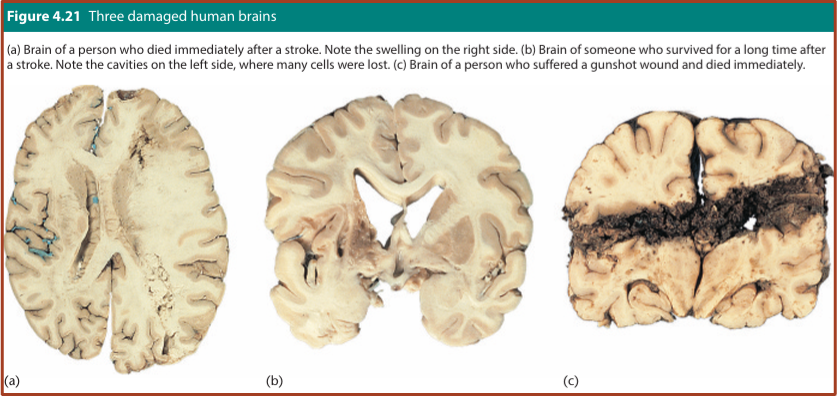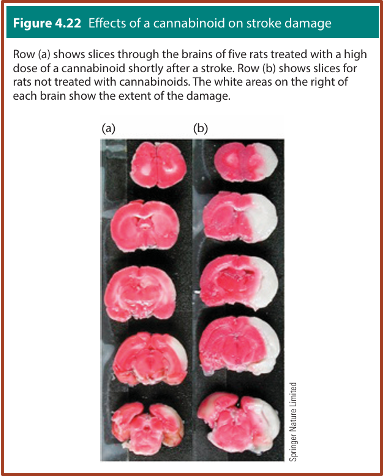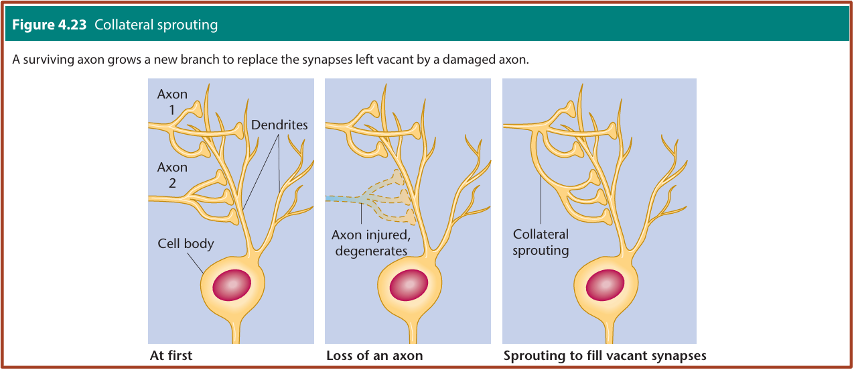Lecture 4.2: Plasticity After Brain Damage
1/20
There's no tags or description
Looks like no tags are added yet.
Name | Mastery | Learn | Test | Matching | Spaced |
|---|
No study sessions yet.
21 Terms
Possible Causes of Brain Damage
Include tumors, infections, exposure to radiation or toxic substances, and degenerative conditions.
Closed Head Injury
• Sharp blow to the head that does not puncture the brain
• Most recover without treatment (Babikian et al., 2015).
• The risk is greater after repeated blows to the head (Van Pelt et al., 2021).
• One cause of damage after closed head injury is the rotational forces that drive brain tissue against the inside of the skull.
Blood Clots
Another cause that interrupts blood flow to the brain (Kirkpatrick et al., 1995).
Stroke
Temporary interruption of normal blood flow to a brain area (also known as cerebrovascular accident).
Ischemia (Type of Stroke)
Blood clot or obstruction in an artery, leading to deprivation of oxygen and glucose in neurons as well as accumulation of CSF (Mestre et al., 2020); more common.
Lead to impairment of the sodium-potassium pump.
Hemorrhage (Type of Stroke)
Ruptured artery, leading to flooding of blood, excess oxygen, calcium and other chemicals; less common.
Lead to impairment of the sodium-potassium pump.
Three Damaged Human Brains
Person who died immediately after a stroke.
Person who survived a long time after a stroke.
Person who suffered a gunshot wound and died immediately.

Tissue Plasminogen Activator (tPA)
Treatment for strokes (specifically for ischemia) that breaks blood clots; should be given 4.5 hours after a stroke.
Cannabinoids
• Exert anti-inflammatory effects, protect the blood–brain barrier, reduce edema, and lower body temperature after a stroke (Cristino et al., 2020; Fernández-Ruiz et al., 2015).
• Exposure to the chemicals found in marijuana - Minimizes the damage caused by strokes in laboratory animals.
• One theoretical rationale - Decrease the release of glutamate.
• Benefits are not associated to tetrahydrocannabinol (THC).
Effects of a Cannabinoid on Stroke Damage

Diaschisis
• Decreased activity of surviving neurons because of damage to other neurons.
• When this contributes to behavioral deficits following brain damage, increased stimulation should help.
• Injecting amphetamine significantly enhanced behaviors related to damaged areas. / Injecting a drug to block dopamine synapses impaired behavioral recovery.
Axons
• Damage to the brain or spinal cord kills cells, and it also cuts this nerve fiber.
• A damaged one in the peripheral nervous system does grow back at a rate of about 1 mm per day, following its myelin sheath to the original target.
• They do not grow back in the adult mammalian brain or spinal cord.
Chondroitin
Chemical produced by the astrocytes that inhibit regeneration, but they also reduce inflammation spread.
Electrical Stimulation of Receptors
In the spinal cord can help rats regain movement (Asboth et al., 2018), but the animal needs to practice the relevant movements (Abe et al., 2018; Hollis et al., 2016; Wahl et al., 2014).
Axon Sprouting
• After a cell loses input from an axon, it secretes neurotrophins.
• Neurotrophins - induce other axons to form new branches (Collateral sprouts) that take over the vacant synapses.
• The behavioral recovery due to collateral sprouts depends on whether the sprouting axons convey information similar to that of the axons that they replace.
Collateral Sprouting

Denervation Supersensitivity
• If a certain set of synapses becomes inactive—perhaps because of damage to incoming axons—the remaining synapses become more responsive, more easily stimulated.
• It helps compensate for decreased input.
• Tt can strengthen not only the desirable connections but also undesirable ones, sometimes those responsible for pain.
Somatosensory Cortex of a Monkey after Finger Amputation
Reorganized Sensory Representations
• It was found that the stretch of cortex previously responsive to the limb was now responsive to the face (Pons et al., 1991).
• Evidently the brain areas that start off as arm areas, hand areas, or whatever retain those properties even after decades without normal input.
Phantom Limb
• Continuing sensation of an amputated body part.
• That experience can range from tingling to intense pain, either occasionally or constantly. The phantom sensation might last days, weeks, or a lifetime.
• Develop when the relevant portion of the somatosensory cortex reorganizes and becomes responsive to alternative inputs (Flor et al., 1995).
• Seeing someone else being touched can also elicit a sensation in the phantom limb (Goller et al., 2013).
Learned Adjustments in Behavior
• Much recovery from brain damage depends on learning to make better use of the abilities that were spared.
• One treatment for people recovering from a stroke is to force them to use the weaker limb by preventing them from using the normal limb.
• Training is most effective during the first few months after damage.